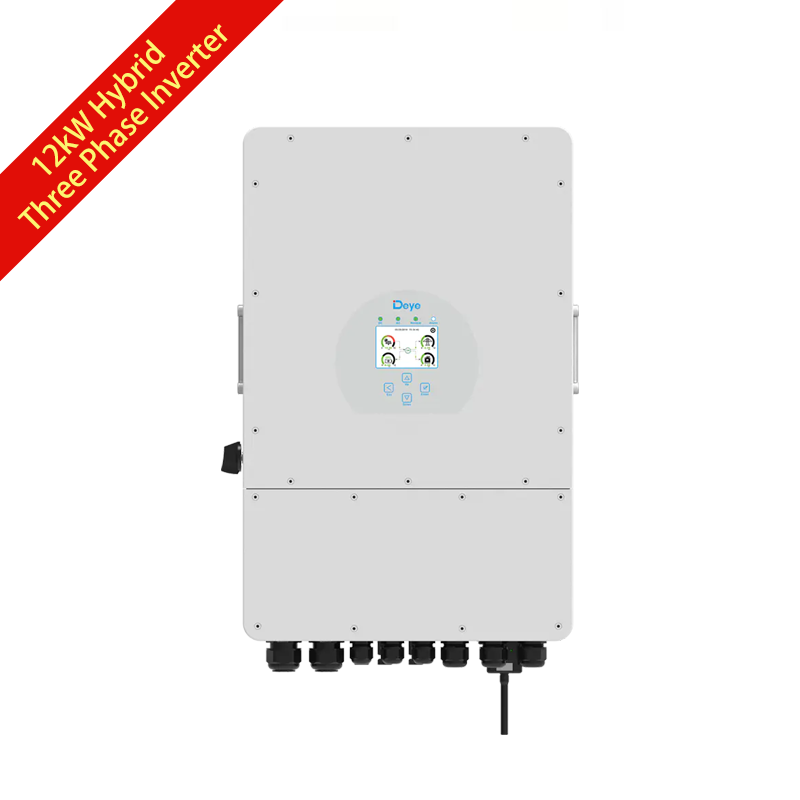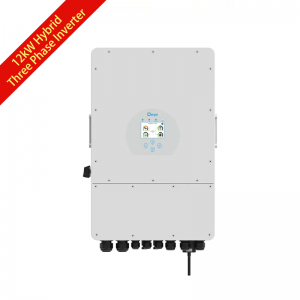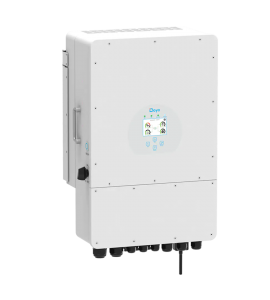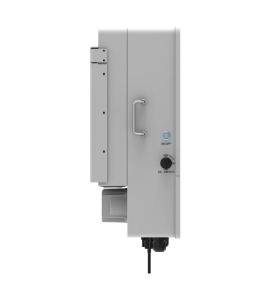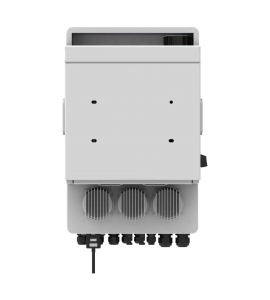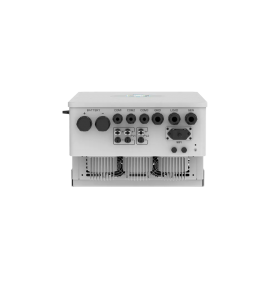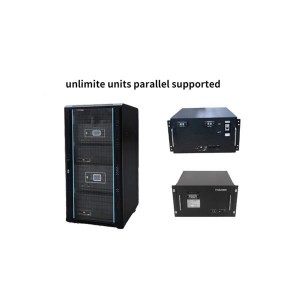

Deye 12kW Three Phase Hybrid Solar Inverter
ABOUT
Deye 12kW Three Phase Hybrid Solar Inverter
| Model | SUN-12K-SG04LP3-EU |
| Battery Input Data | |
| Battery Type | Lead-acid or Lithium-ion |
| Battery Voltage Range (V) | 40~60V |
| Max. Charging Current (A) | 240A |
| Max. Discharging Current (A) | 240A |
| Charging Curve | 3 Stages / Equalization |
| External Temperature Sensor | Yes |
| Charging Strategy for Li-Ion Battery | Self-adaption to BMS |
| PV String Input Data | |
| Max. DC Input Power (W) | 15600W |
| Rated PV Input Voltage (V) | 550V(160V~800V) |
| Start-up Voltage (V) | 160V |
| MPPT Range (V) | 200V-650V |
| Full Load DC Voltage Range (V) | 350V-650V |
| PV Input Current (A) | 26A+13A |
| Max. PV ISC (A) | 34A+17A |
| Number of MPPT / Strings per MPPT | 2/2+1 |
| AC Output Data | |
| Rated AC Output and UPS Power (W) | 12000W |
| Max. AC Output Power (W) | 13200W |
| Peak Power (off grid) | 2 times of rated power, 10 S |
| AC Output Rated Current (A) | 18.2/17.4 |
| Max. AC Current (A) | 27.3/26.1 |
| Max. Continuous AC Passthrough (A) | 45A |
| Output Frequency and Voltage | 50/60Hz;3L/N/PE 220/380Vac,230/400Vac |
| Grid Type | Three Phase |
| Current Harmonic Distortion | THD<3% (Linear load<1.5%) |
| Efficiency | |
| Max. Efficiency | 97.60% |
| Euro Efficiency | 97.00% |
| MPPT Efficiency | 99.90% |
| Protection | |
| PV Input Lightning Protection | Integrated |
| Anti-islanding Protection | Integrated |
| PV String Input Reverse Polarity Protection | Integrated |
| Insulation Resistor Detection | Integrated |
| Residual Current Monitoring Unit | Integrated |
| Output Over Current Protection | Integrated |
| Output Shorted Protection | Integrated |
| Output Over Voltage Protection | Integrated |
| Surge protection | DC Type II / AC Type Ⅲ |
| Certifications and Standards | |
| Grid Regulation | CEI 0-21, VDE-AR-N 4105, NRS 097, IEC 62116, IEC 61727, G99, G98, VDE 0126-1-1, RD 1699, C10-11 |
| Safety EMC / Standard | IEC/EN 61000-6-1/2/3/4, IEC/EN 62109-1, IEC/EN 62109-2 |
| General Data | |
| Operating Temperature Range (℃) | -45~60℃, >45℃ Derating |
| Cooling | Smart cooling |
| Noise (dB) | <45 dB |
| Communication with BMS | RS485; CAN |
| Weight (kg) | 33.6 |
| Size (mm) | 422W×699.3H×279D |
| Protection Degree | IP65 |
| Installation Style | Wall-mounted |
| Warranty | 5 years |
Hybrid photovoltaic + energy storage system, that is the direct current generated by photovoltaic modules is stored in the battery pack through the controller, and the grid can also charge the battery through a bidirectional DC-AC converter. The gathering point of energy is at the DC battery end. During the day, the photovoltaic power generation first supplies the load, and then charges the battery through the MPPT controller. The energy storage system is connected to the grid, and the excess power can be connected to the grid; at night, the battery is discharged to supply the load, and the insufficient part is supplemented by the grid; And lithium batteries only supply power to off-grid loads, and grid-connected loads cannot be used. When the load power is greater than the PV power, the grid and PV can supply power to the load at the same time. Because photovoltaic power generation and load power consumption are not stable, it is necessary to rely on the battery to balance the energy of the system. In addition, the system also supports the user to set the charging and discharging time to meet the user's electricity demand.
The hybrid inverter integrates off-grid functions to improve charging efficiency. Grid-tie inverters automatically shut off power to the solar panel system during a power outage for safety reasons. Hybrid ones, on the other hand, allow users to have both off-grid and grid-connected capabilities, so they can use power even during blackouts. Hybrid ones simplify energy monitoring, and vital data such as performance and energy production can be checked through the inverter panel or connected smart devices. If the system has two inverters, they must be monitored separately. DC coupling reduces losses in AC-DC conversion. Battery charging efficiency is about 95-99%, compared to 90% for AC coupling.
Hybrid ones are economical, compact and easy to install. Installing a new solar inverter with DC-coupled batteries may be less expensive than retrofitting AC-coupled batteries to an existing system, as controllers are less expensive than grid-tied inverters, and transfer switches are less expensive than distribution cabinets. The DC coupling scheme can also be made into a control integrated machine, which can save equipment costs and installation costs. Especially for small and medium power off-grid systems, the DC coupling system is very cost-effective. The hybrid solar inverter has a high degree of modularity, and it is easy to add components and controllers, and additional components can be easily added using a relatively low-cost DC solar controller. And hybrid solar inverters are designed to integrate storage at any time, making it easier to add battery packs. The hybrid solar inverter system is more compact, uses high-voltage batteries, and has smaller cable sizes and lower losses.
